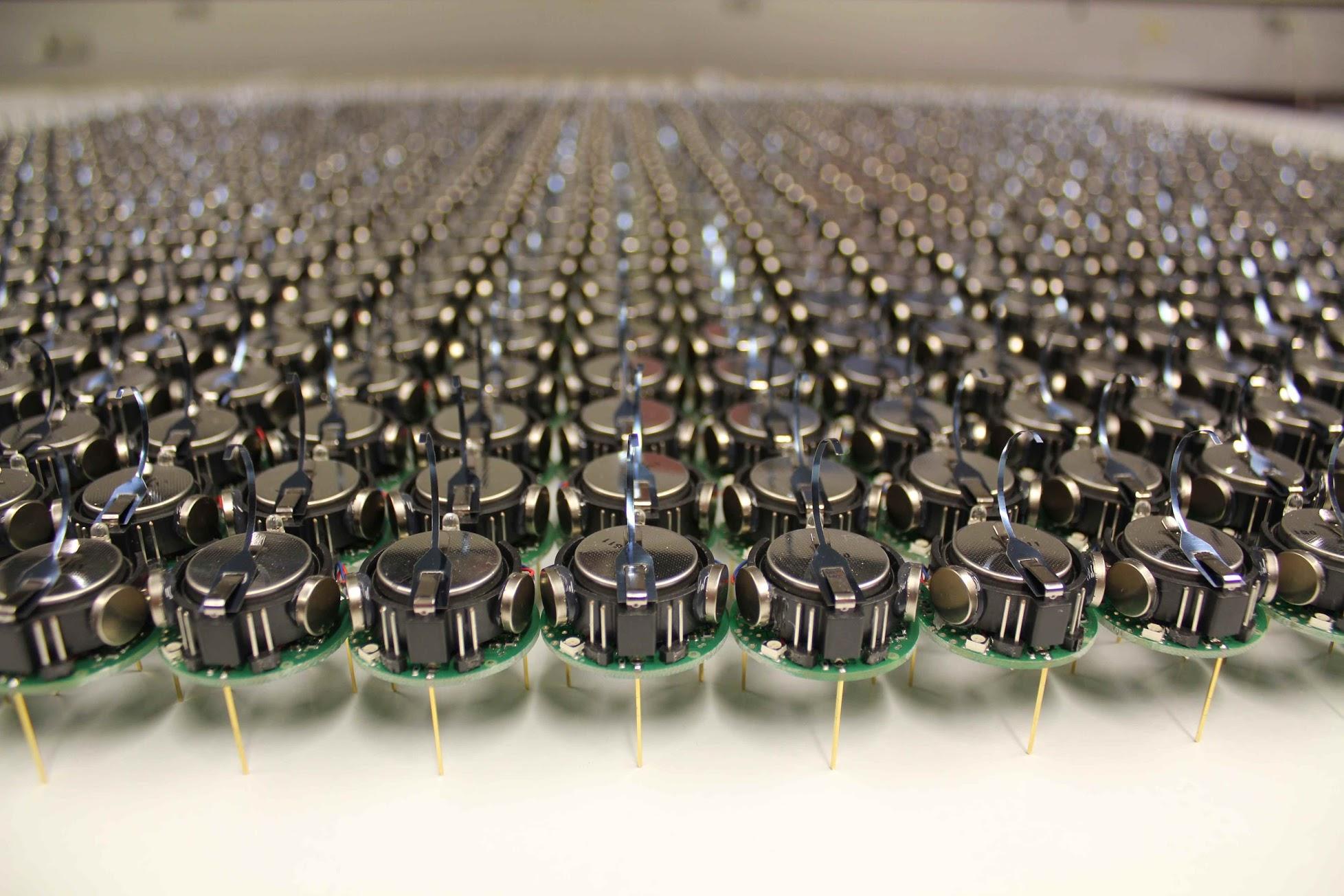
Autonomous robotic devices are certainly capable of some impressive feats, but as is the case with people, sometimes large groups can accomplish what an individual or a small group can’t.
Research projects such as BAE Systems’ MAST program recognize this potential, and are investigating ways in which entire swarms of small robots could work together. The problem is, given how much time and money goes into the creation of a typical autonomous robot, it’s difficult to find a swarm of them to experiment upon – researchers often have to use computer simulations, or do their tests with a small group of robots, then scale up the results. That’s where Harvard University’s Kilobot project comes into play. It incorporates tiny swarming robots that take just five minutes to build, and that are worth about US$14 each.
Each Kilobot is powered by a rechargeable 3.4-volt lithium-ion battery, that can keep it running for at least three hours. It moves via three rigid legs that are vibrated by two motors, allowing it to move left, right or straight forward. A bottom-mounted wide-angle infrared transceiver shoots a light beam down at the smooth surfaces that the robot shimmies across, that beam reflecting up to be received by other nearby Kilobots. This lets them communicate with one another, and judge proximity to their neighbors. An onboard microcontroller allows them to act on the data they receive.
Swarms of potentially hundreds or even thousands of Kilobots can be controlled by an overhead infrared controller, that can program an unlimited number of robots simultaneously in under 40 seconds.







